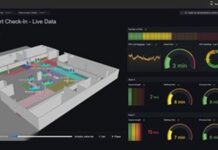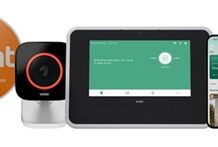
Checkpoint Systems launches a new system to help retailers view in-store occupancy levels and receive alerts in real-time. The SmartOccupancy solution is designed for stores with an occupancy limit or those with high shrink rates. It helps retail associates or security guards view the number of shoppers currently in a store in real-time, while helping managers deploy staff efficiently, combating risk and deterring theft more effectively.
SmartOccupancy accurately counts the number of people entering and exiting a store, and sends an alert to staff when the store is close to maximum capacity. Managers can set and change threshold levels, and create different zones with distinct entry/exits, as well as concession areas or toilets. This way, SmartOccupancy gives a clear view of multiple areas with the overall store capacity included.
Employees and managers can access the information online or via an in-store tablet and react in real-time to live occupancy numbers. Visual colour indicators on the tablet enable staff to instantly recognise when a breach in the occupancy threshold is about to occur.
Red indicates that the store has met its capacity, yellow highlights that occupancy is almost met, and grey means that no occupancy alerts are required. An additional alert is sent to store staff so they can respond appropriately.
SmartOccupancy uses the most accurate overhead people counting sensor in the Checkpoint range – Visiplus 3D, which connects to Checkpoint’s cloud-based software portal HALO. This enables retailers to access reports on occupancy levels in stores across a region, monitor store compliance to maintain or amend the threshold set.
Until now, retailers had to control the occupancy of their stores manually and, in some cases, hire additional staff or guarding. SmartOccupancy helps retailers make decisions based on data trends in the cloud, allowing them to adjust staffing levels and guarding hours. Saving retailers not only money but human resources and time.











